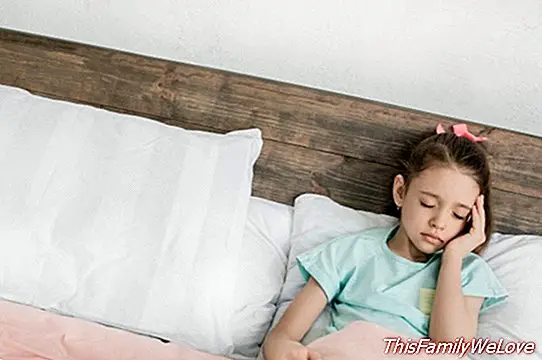Pain threshold in children, how to know the intensity of it

No father likes his son to have a bad time. Any illness in the little ones worries the parents. But the first step to remedy the situation is to recognize how serious it is. For this reason, several factors must be taken into account, such as the threshold of pain of the kids.
As indicated by the Spanish Association of Pediatrics, AEP, for a long time, it has not been given to pain the relevance and consideration that should have. The severity of many diseases is determined, among other factors, by this threshold. The estimation of the intensity of these sensations is important for both the patient and the doctor.
How to assess the pain threshold
AEP defines pain as an unpleasant emotional and sensitive experience associated with an injury to an area of the body. Pain is one of the most frequent causes of suffering in children suffering from a disease, although this is mild. Determining the threshold in children is not easy, especially in the youngest ones, since their perception can be influenced by many factors and at the same time communication with them is not easy.
When a child feels pain, their behavior usually changes and this offers clues, especially in younger children 7 years, since they are not able to adequately communicate this feeling. Some behaviors that can indicate that a child feels pain are: unexplained crying or whining, less activity, rejection of food, seeking contact with parents more than usual, who repeatedly takes the hand to some part of their body , hold it, or let the child avoid rubbing a part of his body with nothing else.
It is also important to consider how a difficult situation affects your usual activity, such as playing in the park or at home, playing sports, going to school, etc. According to age, the type of pain and the situation, the professionals health professionals use different scales composed of colors, numbers or drawings to try to quantify the intensity of pain. Choosing which one to use is not as important as knowing how to apply it. There are two types of scales that are used according to the patient's age: subjective and objective.
Objective scale
The pain threshold is assessed by the attitudes and behavior of the children:
- Face:
Level 0. No particular expression, without smile, disinterested.
Level 1. Occasional grimace or frown. Reserved.
Level 2. Frown frequently or steadily, jaw clenched, chin trembling.
- Legs:
Level 0. Normal or relaxed position.
Level 1. Intranquil, restless, tense.
Level 2. Kick, lower and raise your legs.
- Activity:
Level 0. Lying calm, in a normal position, moves easily.
Level 1. Squirms, changes posture, tense.
Level 2. Arches, is stiff, or shakes.
- Crying:
Level 0. He does not cry (neither when he is awake, nor when he is asleep).
Level 1. Moans or whines, complains from time to time.
Level 2. Constant crying, screaming or sobbing, frequent complaints.
- Ability to feel relief or comfort:
Level 0. Happy, relaxed.
Level 1. Calms down when you touch him, lull him or talk to him. He can be distracted.
Level 2. Difficulty to comfort or comfort you.
Subjective scale
The subjective scales are easier to interpret, since it is the child who tells us what hurts, where, for how long and all that translates into numbers, colors or drawings. They can only be used in older children, with the ability to understand and express themselves better. For older children 5 years Scales are used with drawings of faces that represent different intensities of pain and the child chooses the one that most resembles how it hurts. Being the number 0 no pain and the number 10 the greatest possible pain.
Damián Montero




